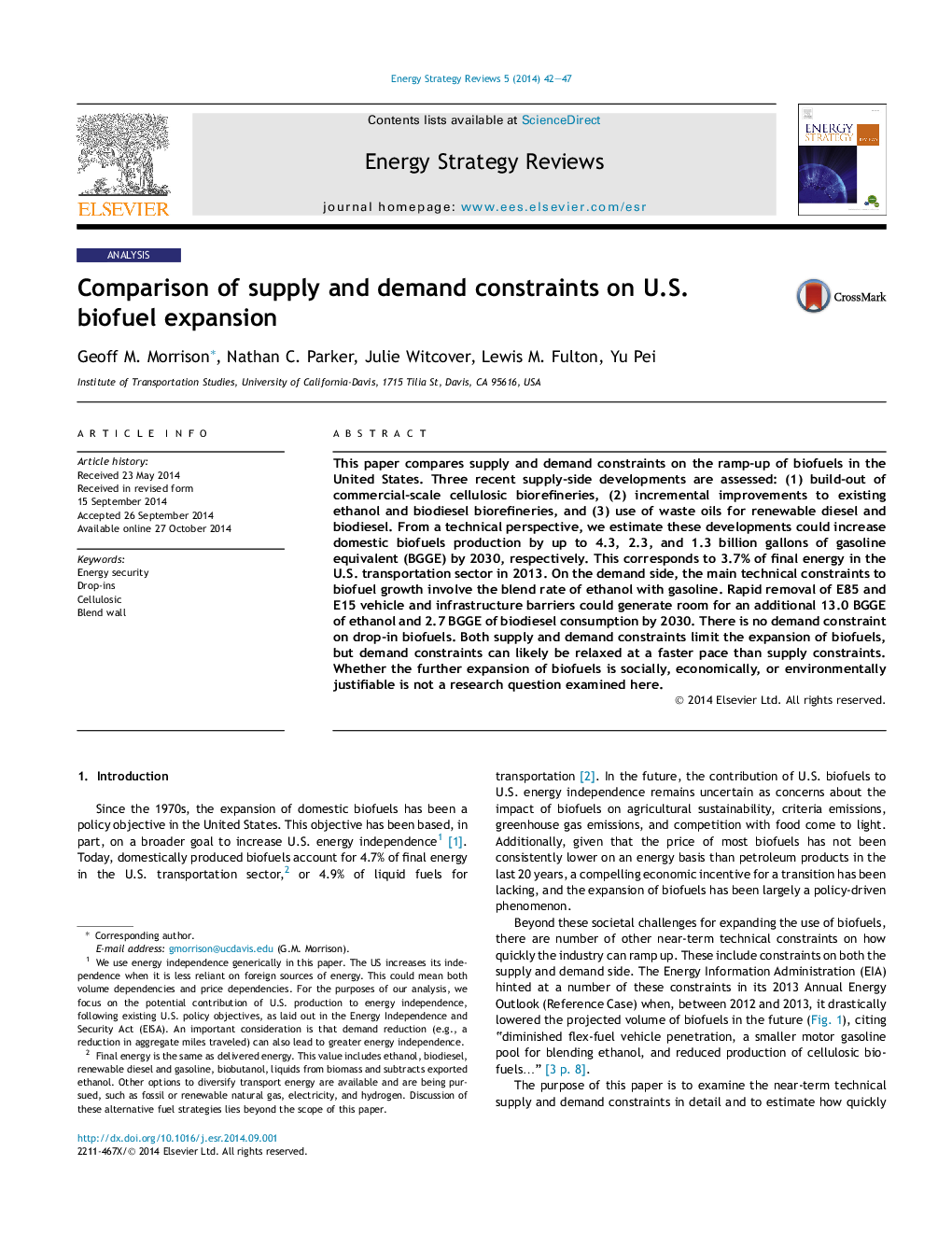| Article ID | Journal | Published Year | Pages | File Type |
|---|---|---|---|---|
| 7434825 | Energy Strategy Reviews | 2014 | 6 Pages |
Abstract
This paper compares supply and demand constraints on the ramp-up of biofuels in the United States. Three recent supply-side developments are assessed: (1) build-out of commercial-scale cellulosic biorefineries, (2) incremental improvements to existing ethanol and biodiesel biorefineries, and (3) use of waste oils for renewable diesel and biodiesel. From a technical perspective, we estimate these developments could increase domestic biofuels production by up to 4.3, 2.3, and 1.3 billion gallons of gasoline equivalent (BGGE) by 2030, respectively. This corresponds to 3.7% of final energy in the U.S. transportation sector in 2013. On the demand side, the main technical constraints to biofuel growth involve the blend rate of ethanol with gasoline. Rapid removal of E85 and E15 vehicle and infrastructure barriers could generate room for an additional 13.0Â BGGE of ethanol and 2.7Â BGGE of biodiesel consumption by 2030. There is no demand constraint on drop-in biofuels. Both supply and demand constraints limit the expansion of biofuels, but demand constraints can likely be relaxed at a faster pace than supply constraints. Whether the further expansion of biofuels is socially, economically, or environmentally justifiable is not a research question examined here.
Keywords
Related Topics
Physical Sciences and Engineering
Energy
Energy (General)
Authors
Geoff M. Morrison, Nathan C. Parker, Julie Witcover, Lewis M. Fulton, Yu Pei,
